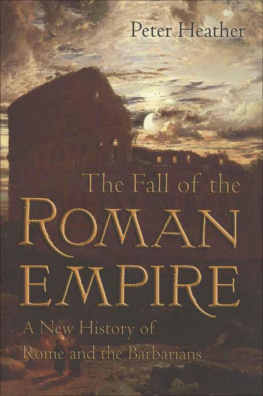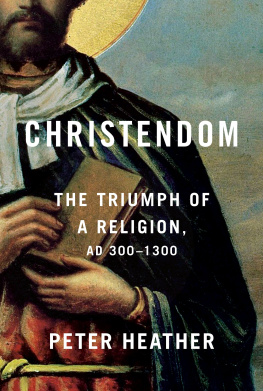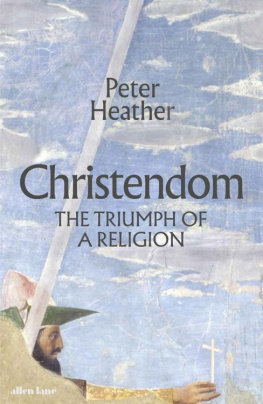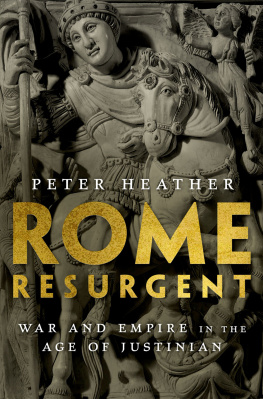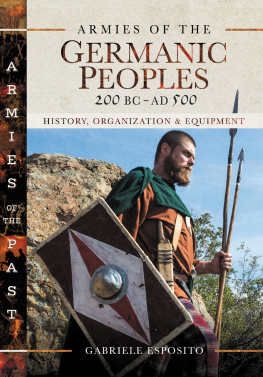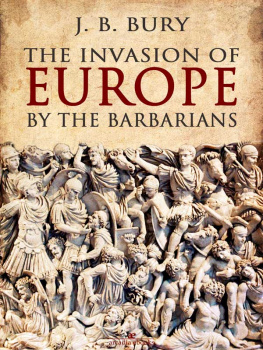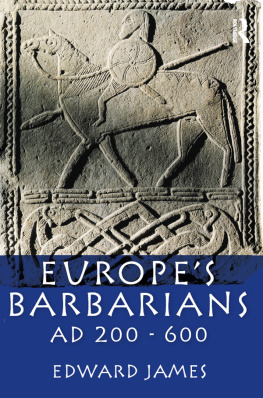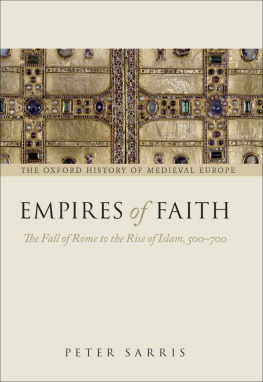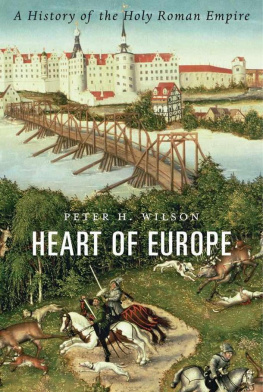EMPIRES AND BARBARIANS
EMPIRES AND BARBARIANS
The Fall of Rome and the Birth of Europe
PETER HEATHER


Oxford University Press, Inc., publishes works that further Oxford Universitys objective of excellence in research, scholarship, and education.
Oxford New York
Auckland Cape Town Dar es Salaam Hong Kong Karachi
Kuala Lumpur Madrid Melbourne Mexico City Nairobi
New Delhi Shanghai Taipei Toronto
With offices in
Argentina Austria Brazil Chile Czech Republic France Greece
Guatemala Hungary Italy Japan Poland Portugal Singapore
South Korea Switzerland Thailand Turkey Ukraine Vietnam
Copyright 2009 by Peter Heather
Published by Oxford University Press, Inc.
198 Madison Avenue, New York, New York 10016
www.oup.com
Oxford is a registered trademark of Oxford University Press.
First published in 2009 in Great Britain by Macmillan, an imprint of Pan Macmillan Ltd.
Map artwork by ML Design
All rights reserved. No part of this publication may be reproduced, stored in a retrieval system, or transmitted, in any form or by any means, electronic, mechanical, photocopying, recording, or otherwise, without the prior permission of Oxford University Press.
Library of Congress Cataloging-in-Publication Data
Heather, P. J. (Peter J.)
Empires and barbarians : migration, development, and the birth
of Europe / Peter Heather.
p. cm.
Includes bibliographical references and index
ISBN 978-0-19-973560-0
1. Migrations of nations. 2. EuropeHistoryTo 476.
3. EuropeHistory476 1492. 4. Culture diffusion
EuropeHistory. 5. Civilization, Medieval. 6. RomeHistory
Empire, 284476. I. Title.
D135.H436 2010
940.1dc22 2009044770
1 3 5 7 9 8 6 4 2
Printed in the United States of America
on acid-free paper
To my Father and Father-in-Law
ALLAN FREDERICK HEATHER
28.2.192314.1.2008
RICHARD MILES SAWYER
30.7.19173.9.2007
PICTURE ACKNOWLEDGEMENTS
AKG Images: 4, 6, 10, 11, 12, 17, 18, 26
Bodleian Library: 14
Bridgeman Art Library: 5, 7, 8, 16, 22, 25
British Museum: 13
British Museum Press: 19, 20
(from The Early Slavs by P. M . Barford, 2001, pp. 333, 335.
After V. D. Baran and O. M. Prikhodniuk.)
Corbis: 15
Getty: 1, 2, 3, 21, 23, 24, 28, 29
Mary Evans Picture Library: 9
Oxford University Press: 27
(from The Oxford Illustrated History of the Vikings, ed. P. Sawyer, 1997, p. 154)
Every effort has been made to contact copyright holders of photographs reproduced in this book. If any have been inadvertently overlooked, the publishers will be pleased to make restitution at the earliest opportunity.
CONTENTS
PREFACE
This book has taken me an extremely long time to write. I signed the original contract when my son William was in the womb. He will be taking GCSEs when the book is finally published (for those of you not familiar with the British education system, this means hes sixteen...). In part, it has taken so long because I have being doing other things as well in the meantime, but this project has of and in itself consumed four separate periods of academic leave, which is more time than I have ever spent on anything else, and this does reflect the real difficulties of the task as it evolved. To start with, it covers a huge range in time and space, and consequently a number of entirely separate specialist literatures. There are several of these which I make absolutely no claim to have mastered in full, not least Slavic history and archaeology, where I am exceedingly grateful for the long-standing habit of its major scholars to publish versions of their key arguments in Western European languages. Here, and in many other intellectual contexts in what follows, I am often rushing in where no self-respecting angel would be seen dead. This, of course, is a second reason why the project has taken so long.
But treating so many different contexts in such a thoroughly comparative fashion is central to the design of the project. My original design involved writing about the transformation of barbarian Europe in the first millennium from two separate perspectives. First, it seemed to me that similar patterns of development could be observed in Germanic societies around the fringes of the Roman Empire in the first half of the millennium, and in Slavic societies around the fringes of the Frankish and Byzantine Empires in the second. This could surely not be accidental. Second, I felt that some modern approaches to the phenomenon of barbarian migration in the same period had reacted too strongly to a previous overemphasis on its importance, and were now taking an overly reductive line. To help myself think again about first-millennium migration, it then seemed a good idea to read about its more modern and better-documented counterparts, and from that reading the outline of the book as it now stands eventually took shape. What gradually dawned on me from my reading in the comparative literature on migration is that, first, its patterns and forms are usually intimately linked to prevailing patterns of social and economic development, and, second, that they are also often decisively shaped by the political context(s) in which they are operating. In other words, although it took me a long time to realize it, the two separate strands of my original approach to barbarian Europe in the first millennium were not separate strands at all, but mutually dependent aspects of one broader process of transformation. The patterns of barbarian migration in the first millennium were bound to be dictated by the broader socioeconomic and political transformations of barbarian society in the same period, and shaped, too, by the ways in which those societies were interacting with the imperial powers of their day. This is the central argument of the book, and it could only emerge from the very broadly comparative approach that the project has eventually taken. It is of course for the reader to judge whether the overall gains from adopting such a strategy compensate for the deficiencies in detail that have undoubtedly been generated in its wake.
Otherwise, I would like here only to acknowledge with great pleasure and gratitude all the help that Ive had with this project over the many years Ive been pursuing it. There are some straightforwardly institutional debts. The Classics and History departments of Yale University provided me with a year-long refuge in 19992000, during which I acquired much of my understanding, such as it is, of patterns of modern migration. The AHRC awarded me an extra terms study leave for autumn 2004, giving me some eight months off in total, during which time I was able to draft most of the later chapters of the book. Part of this time was also spent in the extremely pleasant surroundings of Dumbarton Oaks in Washington DC, where it is so wonderfully easy to work surrounded by so many books and such stimulating company. It gives me great pleasure to thank the Director and Trustees for the award of a fellowship for the Fall Term of 2004. A small grant under the AHRCs Migrations and Diasporas project also allowed me to run a series of seminar sessions on Migration and the First Millennium in spring and summer 2005, which proved extremely fruitful for myself, and, I hope, for the other participants as well.
The more particular academic debts I have built up over the past sixteen years are enormous, and I cant thank everyone individually. In my initial years of thinking about the topic, I was lucky enough to be invited to participate in one of the sub-groups of the Transformation of the Roman World project, funded by the European Science Foundation. It remains a formative intellectual experience for me, and I cannot even begin to lay out how much I owe to the many exchanges of ideas and information that both occurred at the time and have flowed from it subsequently. I am particularly grateful, however, to 
Next page

